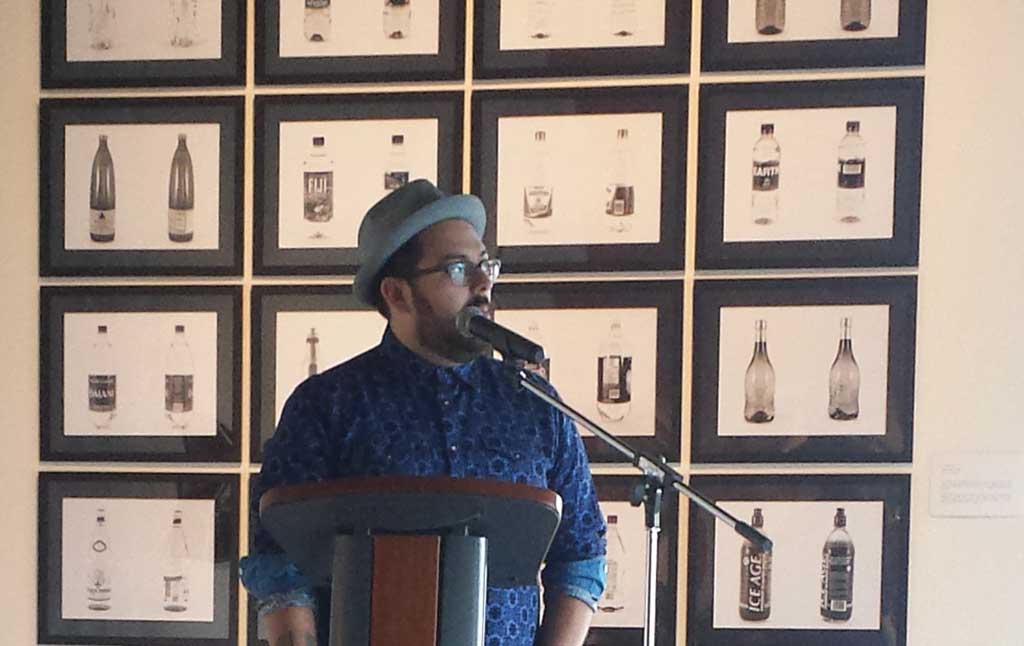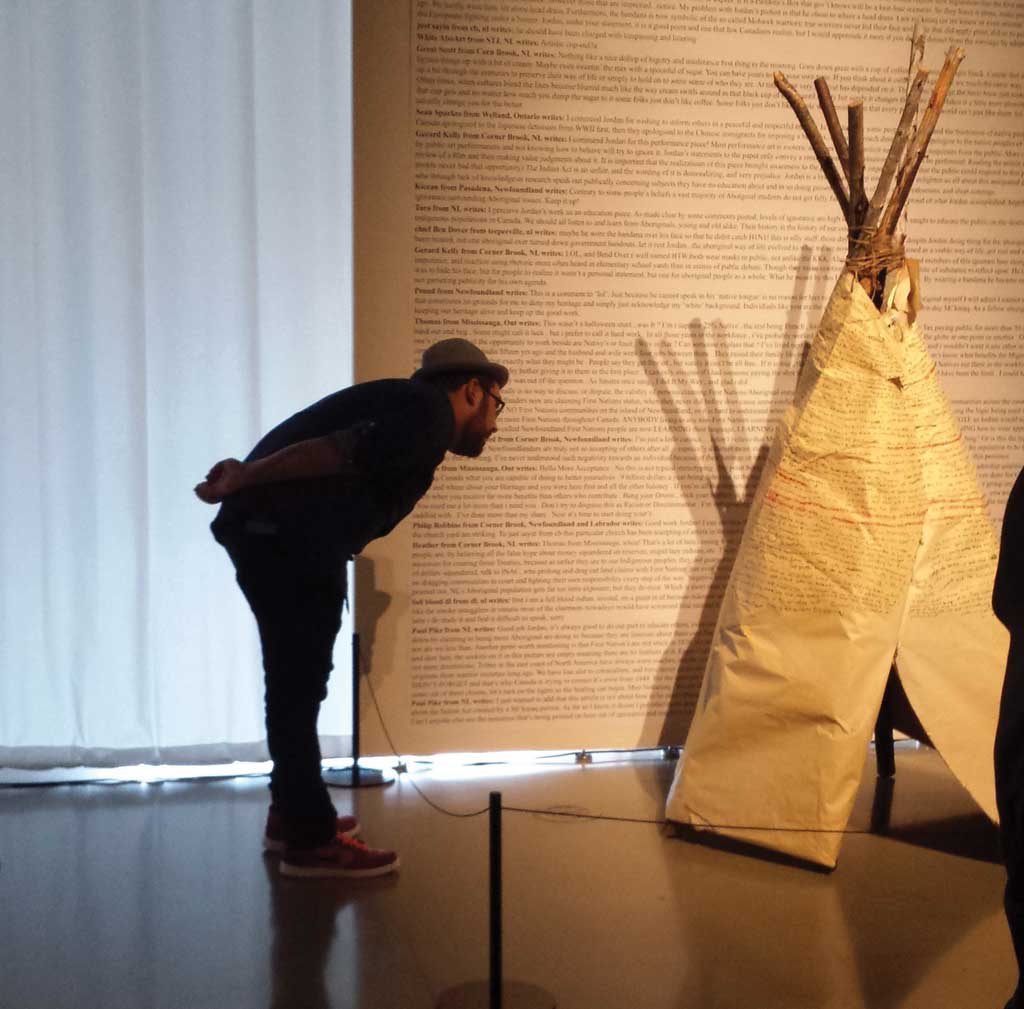By Martin Castro (The Cascade/Photos) – Email
Print Edition: April 8, 2015

“I hate when you can’t touch a painting or a sculpture,” said Jordan Bennet, one of the artists behind the Decolonize Me exhibit at the Reach Gallery Museum in Abbotsford. “I started making artwork where you can actually come into the gallery and interact with it, so as a viewer, you come in and interact with the artwork.”
Roughly 20 people gathered on Saturday to hear curator Heather Igloliorte and artist Jordan Bennett speak about the interactive intention behind the Decolonize Me exhibit, as well as the artistic process.
Bennet spoke to the crowd while presenting a series of photographs of his artwork, one of which was named “Turning Tables.”
“It’s a fully-functional turntable set made entirely out of wood,” explained Bennett. “The records are actually side-cuts of a tree, so as a viewer, you can come in and take the stylus and place it onto the record. As the record spins, you hear the bumps and scratches on the wood.”
Another aspect of the same exhibit includes a recording of Bennett learning words in Mi’kmaq. Bennett spoke on his own self-identity and the fact that, having grown up in Newfoundland, he had to deal with the implications of the Indian Act as well as the repercussions of residential schools throughout his community.
Bennett says he played around with contemporary materials to mimic traditional artifacts. He showed a set of skateboards he had carved out into a pair of snowshoes, then a set of skateboard trucks made out of moose antler, which involved “the opposite — I used traditional material, to make a contemporary object.”
“I think art [allows] people that don’t speak the same language to communicate with each other and understand one another’s culture,” said Bennett. “I know so much about my Mi’kmaq heritage because of artworks that were made hundreds of years ago; I just try to translate it for a contemporary audience.”
He added that through his artwork, he has made more connections with his community.
“I think that’s a big part of learning more about yourself and your own community, is seeing other communities and how art has informed their ways of knowing.”
Bennet also addressed the interactive aspect of his artwork, noting that we live in a time when people are looking for a kind of interaction with spaces.
“I wanted that experience to happen with art itself. To go into an art gallery and feel like you have a connection … If I tack that on to indigenous history, and indigenous ways of knowing, gallery-goers will take that knowledge with them.”
Bennett also had a message for young people:
“Keep on making,” he said. “Don’t be afraid to make and experiment. Make artwork to know that it won’t be perfect, there’s always room to learn about … yourself. Take every opportunity that comes your way.”
Decolonize Me will be on display until April 19.

